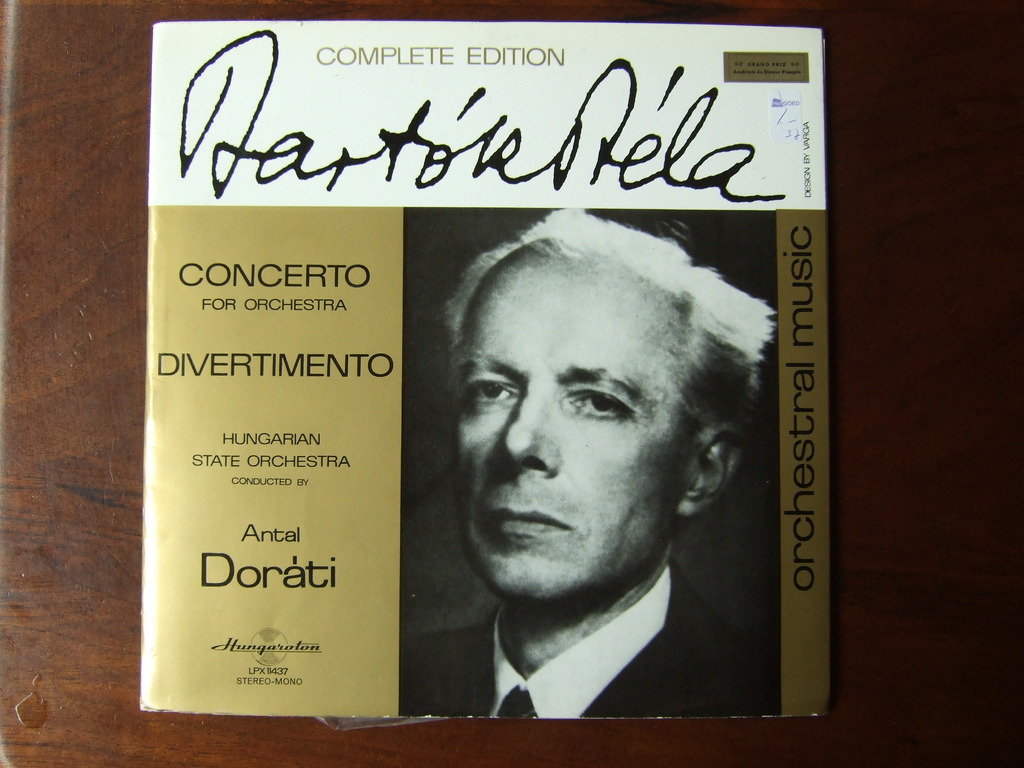Unpacking the 1939-ness of Bartók's "Divertimento For String Orchestra"
You can just *hear* the September Campaign.

Image: Piano Piano! via Flickr
Writing about classical music often means I’m constantly learning and shifting my own expectations, yet in the year since I started writing this column, I’m surprised at what I’m able to pick up on. This past week’s symphony program included Béla Bartók’s Divertimento For String Orchestra, and midway through the piece’s tumultuous and haunting second movement, I flipped through my playbill to see what year it had been written. “What is this, 1939?” I thought only before seeing, yes, wow, hm, interesting, the piece was, in fact, from 1939. I don’t claim to be an expert by any means, but I have garnered the ability to tell when a piece is more or less about Europe on the verge of crumbling.
To backtrack a little: Bartók was the only composer on last week’s program I was fairly unfamiliar with. If you asked me about Bartók’s music a year ago, I would have said something stupid like, “Oh, Bartók, yeah, he’s, like, interesting,” with no further explanation. By “interesting,” I would have really meant “atonal.” Odd, unsettling, despite how tonal Bartók might have argued his work was. He was an early 20th century composer, existing right on the cusp of romantic and modern classical music, and one of two of the most prominent Hungarian composers.
The Divertimento—a form typically referring to a piece of “light music,” not unlike a waltz or another one of the the popular, accessible genres of classical music—was commissioned by Bartók’s friend, conductor and philanthropist Paul Sacher. This was their second collaborative effort, the first being Bartók’s Music For Strings, Percussion, and Celesta. In order to write this Divertimento, Bartók and his wife retreated to Sacher’s chalet in the Swiss Alps. Haha, me too. In fact I write every edition of this column from the Swiss Alps; think of Silvia as my Paul Sacher. Thank you, Silvia, for the chalet!!
Divertimento For String Orchestra (London Symphony Orchestra recorded in 2014) was Bartók’s last composed piece in Europe before fleeing to the United States prior to World War II. Many have said it lacks a politicization, in part because he wrote it in such a remote atmosphere. In fact, in the quiet of the Swiss Alps (from where I am writing right now), he managed to get the piece done in only 15 days. (Same amount of time it takes me to write 800 words.) But I (an idiot) was able to pinpoint a particular 1939-ness about it, so it’s impossible that this piece of “light music” exists in the isolation in which it was written.
The Allegro non troppo begins with a rhythmic waltz, a light folk melody playing throughout. It’s intrinsically catchy, harkening back to a classical style from the prior century. Despite my prior knowledge of Bartók’s atonality, this is a fairly conventional piece; it’s probably the most accessible and this first movement, in particular, drifts between soloists and a central string melody. It’s possible to view this first movement as a meditation on Hungary before World War II—existing somewhere in Liszt’s traditionalism from the 19th century and the modern era. It’s a piece that sits between two times, and while unsettling in stretches, it always manages to pull itself with a solo, a singular voice amidst the crowd.
The Molto adagio is the aforementioned movement that absolutely screams “1939” to me. And why wouldn’t it? Its opening refrain is quiet, hesitant, afraid. There’s a sharp chord on the violins at the 2:04 mark that feels essentially like a call to run or to hide, that things are changing, rapidly, and without order. There are odd stretches of silence and thoughtfulness in this movement; it’s mourning what was lost in the movement prior, and looking ahead to no particularly bright future. At nearly ten minutes, the whole piece unsettled me deeply. To sit through it at the symphony was an exercise in patience and self-control. It’s hard not to get worked up about a piece clearly needling at your comfort. It’s a reminder that accessibility doesn’t necessarily mean a piece is outrightly cheerful or upbeat: its sadness, concern, and darkness are just as, if not more, accessible to a listener. Though I respect and admire this second movement, I couldn’t help but feel relieved when it finally ended.
In its opening few seconds, the Allegro assai might seem to pick up where the Molto adagio left off: a climactic chase ahead, but it almost instantly resets to a quicker version of the folksy beginning movement. This one, however, is a rondo, a true dance. It rushes forward, almost in an attempt to make you forget the despair of the movement prior. And it works! There’s a moment in the music where I actually laughed out loud during the performance. Listen carefully to the part leading up to the 6 minute mark as the strings play a quiet pizzicato melody, only to sweep upwards with a little run. It’s so cheerful—so cute, even—that just as you almost completely forget the movement prior, the central theme comes sweeping back in. It’s loud, it’s anxious, it’s all-consuming and then: it’s over. It’s resolved, but without peace of mind, without a sigh of relief. There was more to come—more fear, war, strife—but Bartók lets it go unsaid.
